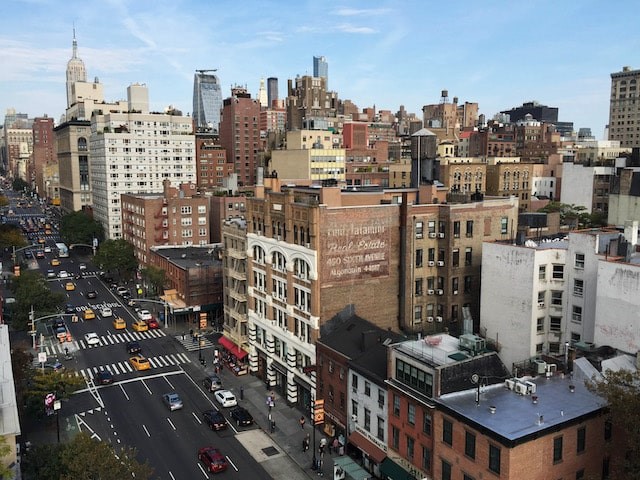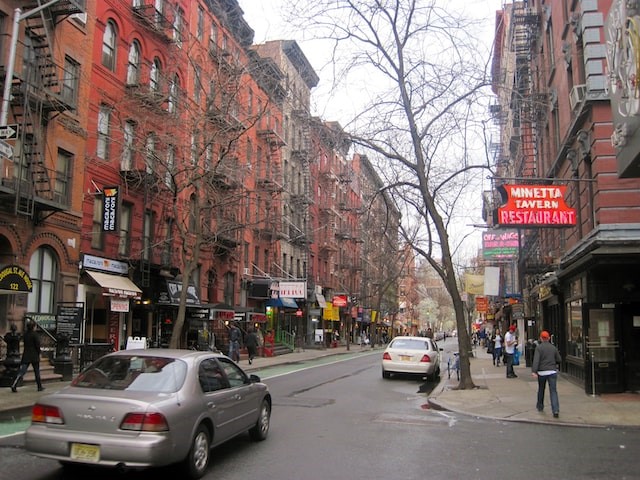
Editor’s Note: The following content, reprinted in three parts — last week’s Part 1, this week’s Part 2, and Part 3 next week, is presented with permission from Randal O’Toole’s The Antiplanner, a blog whose tagline describes its point of view: “Dedicated to the sunset of government planning.” O’Toole is a senior fellow with the Cato Institute who specializes in land-use and transportation issues. Read Part 1 HERE.
While we don’t have a beef with all urban planners, among their ranks are those who believe in reimagining communities as self-contained ecosystems where most of life’s essentials are within walking, bicycling, or public transit distance. The net effect, which causes Vision Zero proponents to swoon, would be the virtual elimination of car ownership and driving in urban settings.
We share this material in its entirety in three installments because it presents in fascinating detail how history has shown that pod-based, high-density community development is a seriously flawed concept. Individual mobility, and the freedom of choice associated with it, is a fundamental right. If we don’t stay vigilant, that right will be planned out of existence.
________________________________
Enter Jane Jacobs
Slum clearance hit a roadblock when New York City planners attempted to replace part of Greenwich Village, a typical pre-1900 mid-rise neighborhood, with a freeway. Among the residents who fought this plan was Jane Jacobs, a journalist who wrote for Architectural Forum magazine. She ended up writing The Death and Life of Great American Cities, a book whose opening sentence was, “This book is an attack on current city planning and rebuilding.”

Jane Jacobs in 1961 during the campaign to save Greenwich Village. Photo by Phil Stanziola.
Jacobs correctly argued that city planners did not really understand how cities worked. Their preoccupations with high-rises, based on Le Corbusier’s fantasies, simply made no sense in an age when single-family homes were less costly and easily accessed with affordable automobiles. Urban planning, she said, was a “pseudoscience” that had not yet “broken with the specious comfort of wishes, familiar superstitions, oversimplifications, and symbols.”
Unfortunately, Jacobs was equally convinced that she did understand how cities worked. She argued that great cities required four conditions: mixed uses, short blocks, a mix of old and new buildings, and a dense concentration of residents and workers. Greenwich Village looked like this, so she imagined that was the only way residents of great cities should live.

Greenwich Village mixes low-rise, much of which was built before 1860, mid-rise, much of which was built between 1870 and 1900, and high-rise, much of which was built after 1890. Photo by Iris Dai.
She admitted that her principles didn’t apply to “what goes on in towns, or little cities, or in the suburbs.” Jacobs didn’t like suburbs, calling them “city-destroying” entities. In reality, her ideas were just as wrong as the urban planners’. She understood something about how her neighborhood worked, but she failed to realize that her neighborhood was just a remnant of a building pattern that hadn’t made sense since 1900.
Jacobs’ Real Goal
Although Jacobs said that her goal was to set for new principles of urban planning, in reality, she was just a NIMBY or, to be more accurate, NIMN (not in my neighborhood). Urban renewal laws required planners to show that a neighborhood was blighted before taking properties by eminent domain, so she focused on showing that her neighborhood wasn’t blighted. Maybe it wasn’t, but it also wasn’t the way most Americans wanted to live.
One of the charges, for example, was that slums were high-crime areas. Rather than present data showing that her neighborhood didn’t have high crime, Jacobs came up with a new planning principle she called “eyes on the street.” Supposedly, the operators of ground-level shops and residents sitting on their front porches (because their apartments were too small to entertain guests) would watch the streets and intimidate potential criminals.
Soon after The Death and Life was published, it became apparent that the high-rise apartments that many cities built to house the low-income families who had been displaced by mid-rise clearance were tragic failures. Due to high crime, some proved to be so unlivable that they were demolished a mere 17 years after they were built. This lent credibility to Jacobs’ argument that planners didn’t know what they were doing but didn’t prove that Jacobs’ ideas were any better.
In 1973, some planners wrote a book called Compact City, arguing that density was the solution to the nation’s energy crisis. The authors suggested that such a compact city could be achieved either through Le Corbusier’s high rises or Jacobs’ mid-rises. The Death and Life became required reading in many urban planning schools, and soon planners and architects were rejecting high rises but promoting mid-rises.
After her book was published, Jacobs became something of a chameleon, equally comfortable trashing planners when talking with libertarians as she was trashing the suburbs, where most Americans chose to live, when talking with urban planners and density advocates. This made her popular among people of all political persuasions, some of whom continue to take her “principles” as gospel.

A typical street of mid-rise apartments with ground-floor shops in Greenwich Village. Thanks to Jane Jacobs, this has become the model for transit-oriented developments nationwide. Photo by J.S. Clark.
However, a book reviewer who saw through her was Herbert Gans, a sociologist. He had spent a year living in a mid-rise neighborhood of Boston and another year living in a suburban Levittown, writing books about both experiences. Gans’ review of Death and Life noted that Jacobs was attracted to Greenwich Village’s “lively streets,” which were a result of the small apartments that forced most people to entertain outdoors.
Suburbanites were just as lively but did their entertainment indoors or in backyards, where they were less visible. He also understood, which Jacobs apparently did not, that the buildings in Greenwich Village “were built for a style of life which is going out of fashion with the large majority of Americans who are free to choose their place of residence.” As a result, Gans said, her fundamental assumptions and principles were largely wrong.
Another critic, though more indirectly, was an architect named Oscar Newman, who wondered why the low-income high-rises built in the 1950s suffered from high crime rates when nearby single-family neighborhoods occupied by people in the same socioeconomic class were relatively crime-free. He carefully compared architectural features with crime rates on tens of thousands of city blocks and concluded that private yards and private entrances were the key to minimizing crime, not eyes on the street, which he called “an unsupported hypothesis.” Newman called his conclusions “defensible space,” and as it turned out, most of his findings—for example, that cul de sacs reduced crime while alleys enabled more crime—were exactly the opposite of what Jacobs and her followers advocated.
In Part 3, Randal discusses the New Urbanism in Portland, Oregon.



